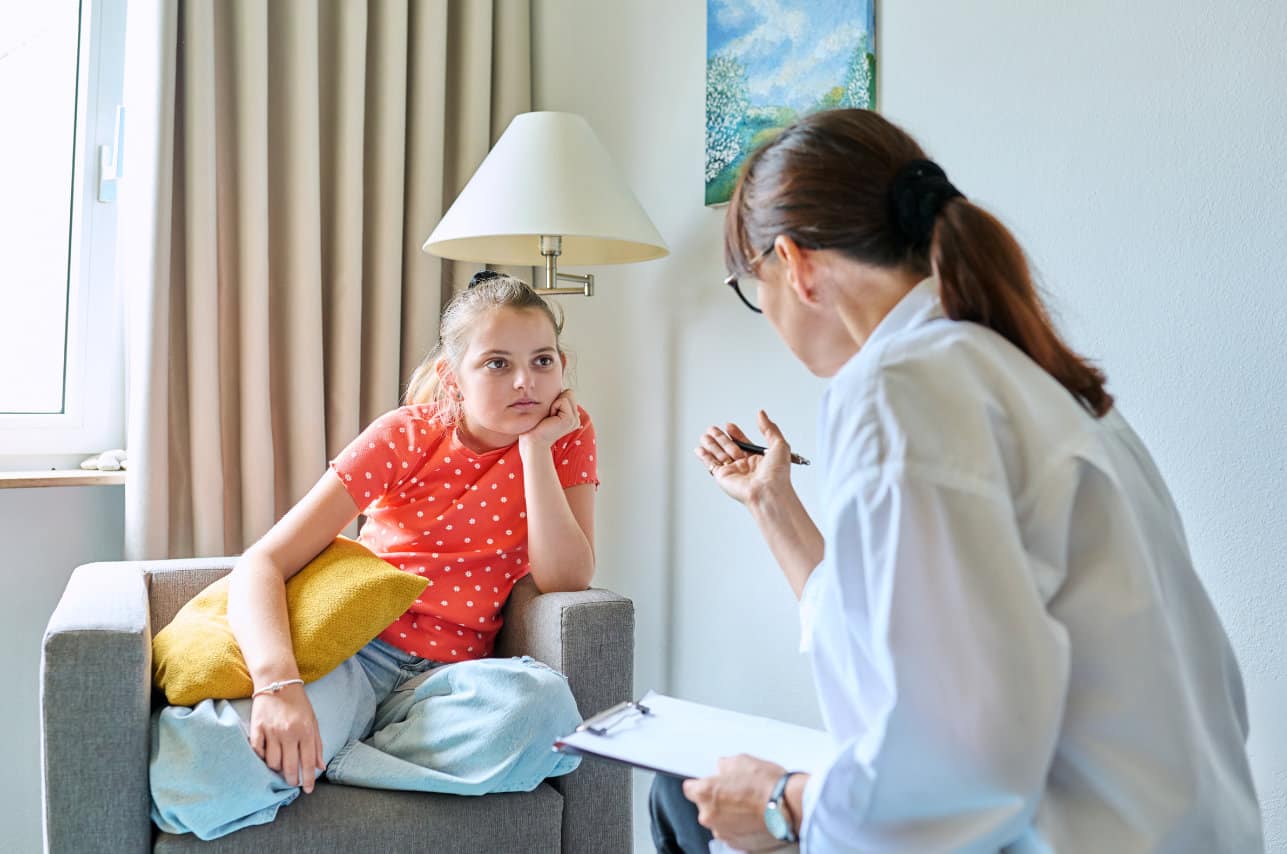Finding the Right Level of Care for Child and Adolescent Mental Health Needs
Behavioral Health Insights
By Micah Hoffman, MD, DABPN, FAPA, QME, CIME, CHCQM
AllMed Behavioral Health Medical Director
Meeting the unique mental health needs of children and adolescents can be a formidable challenge. In recent years, staffing shortages and funding cuts have reduced the availability of (already limited) services, even as mental health issues have soared.1 The scarcity of resources has left many providers at a loss for where to refer young patients with complex and urgent needs. As a result, children too often wind up in the emergency room, where long waits in a chaotic environment can exacerbate their condition.
Referring young patients to the right care level in this environment calls for specialized skills and current clinical experience. This article looks at nuances in child and adolescent psychiatry that influence care-level decisions.
Similar But Not the Same
In many ways, creating a mental health treatment plan for a youth resembles the process for an adult—but with several key differences. Chief among these is that developmental factors must be considered. As with an adult, planning begins with an assessment by a clinician—ideally, a child and adolescent psychiatrist. The clinician attempts to establish rapport with the patient and understand their perception of what is happening along with relevant risk factors and protective factors.
A critical distinction in the case of children and adolescents is that the “patient,” in a sense, is more than one person. Unlike adults, children and adolescents typically don’t seek treatment on their own. Instead, a concerned adult—usually a parent or guardian—initiates the search and remains deeply involved through treatment and beyond. The success of a treatment plan depends heavily on this adult’s participation and support. For this reason, the child and adolescent psychiatrist views the family unit as the patient, rather than the individual child. Including the adult(s) in the process from the beginning by recognizing them as the experts on their child can significantly expedite effective treatment.
Understanding Levels of Care
Once an assessment is complete, the clinician recommends an appropriate level of care, communicating closely with the family to ensure their support. Levels of care available to young patients, from the highest level of security and capacity to address risk to the lowest, include:
Hospital Inpatient Treatment – Appropriate only for patients with acute illness or medication management needs, hospital inpatient stays vary in length but are typically brief. Widespread overcrowding means that a bed may not be available for hours or days, leaving desperate children “boarding” in the emergency room while they wait. While boarding keeps children physically safe, it delays treatment and puts added stress on them and their families. For patients with non-acute conditions, an inpatient stay will, at best, provide a brief respite but is unlikely to make a lasting difference and may not be covered by insurance.
Residential Treatment Facility – Residential treatment may be appropriate for seriously disturbed young people who need intensive and comprehensive psychiatric treatment or when removing a patient from a potentially lethal context is essential. Additionally, for children engaging in risky behaviors, shifting their environment and exposing them to new ideas may prompt their developing brains to want to explore a new identity and move on from risk-seeking (i.e., to “grow out of” the risky behavior). Residential treatment usually is not appropriate for patients with autism spectrum disorders because the care they need can be provided in the home.
Residential treatment programs vary significantly, and not all prioritize working with parents to develop a family system to improve the outcome. For these reasons, and because adolescents rely so heavily on their communities, looking for an alternative to residential treatment within the community may be preferable.
Partial Hospitalization Programs (PHP) – PHPs provide all the treatment services of a psychiatric hospital, but patients go home each evening.
Intensive Outpatient Programs (IOP) – IOPs offer flexibility and allow patients to experience treatment while living in their normal environment. Unlike residential care, they are not one size fits all but can be tailored to the patient and family’s needs. For example, patients and parents might start by attending the program five nights a week and taper down to three and then two, as needed. When a child receives treatment in their normal environment, they will more often encounter reminders of what they’ve learned in treatment, increasing the likelihood that the learned behaviors will stick.
Home-based Treatment Services – A team of specially trained staff go into a home and develop a treatment plan to help the child and family.
Intensive Case Management – Specially trained individuals coordinate or provide psychiatric, financial, legal, and medical services to help the child or adolescent live successfully at home and in the community.
Office or Outpatient Clinic – Visits are usually 30-60 minutes. The number of visits per month depends on the child’s needs.
Transitioning from one level of care to another raises risk for children (like adults) due to the potential for disruptions to treatment. Improving transition experiences calls for a planned, personalized process that addresses the patient’s therapeutic and developmental needs and includes frequent touchpoints. For children, these touchpoints may occur at school, through a community program, or via home visits by a trained team. What’s essential is that they occur regularly, at an appropriate level of frequency. Good information flow among care providers and between care providers and the family is also vital.
Not every community has every type of service or program listed, but many provide a range of treatment options for children and adolescents with mental illness. Where lack of access creates a barrier, physicians can help by acting as a critical bridge between families and organizations or individuals, such as social workers, who are knowledgeable about community resources. Ideally, these parties can help patients and their families connect to and leverage these resources.
Making the Most of Sometimes-Overlooked Resources
Many parents may not know that federal law requires public schools to help children struggling with mental illness or any other health impairment access education. With the right guidance, parents may engage their child’s school system for support.
State child protective services (CPS) programs offer helpful support programs and resources for parents but are often overlooked due to stigma. Physicians can play a critical role in bridging the gap between parents’ understanding of these programs and the reality. By encouraging parents to seek and use these resources, physicians can move the family toward an improved outcome.
Rely on AllMed to Help Navigate Complexity
Determining the right level of care to meet a young patient’s mental health needs takes specialized expertise and familiarity with available resources. The board-certified psychiatrists on the AllMed Behavioral Health Review Panel can help your team navigate the complexities inherent in the process to ensure your young members find the right match.
- American Academy of Pediatrics, American Academy of Child and Adolescent Psychiatry, Children’s Hospital Association. AAP-AACAP-CHA Declaration of a National Emergency in Child and Adolescent Mental Health. October 19, 2021. https://www.aap.org/en/advocacy/child-and-adolescent-healthy-mental-development/aap-aacap-cha-declaration-of-a-national-emergency-in-child-and-adolescent-mental-health/. Accessed August 31, 2023.


